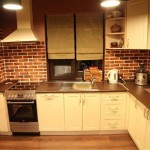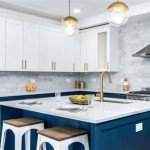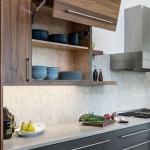How to Change Kitchen Cabinet Hinges to Soft Close
Upgrading kitchen cabinets with soft-close hinges is a popular home improvement project that enhances both functionality and perceived quality. Traditional cabinet hinges often result in abrupt slamming, leading to noise and potential damage to the cabinet frame and doors. Soft-close hinges, on the other hand, incorporate a mechanism that gently draws the door closed, preventing slamming and minimizing wear and tear. This article provides a detailed guide on how to replace existing cabinet hinges with soft-close alternatives.
Before embarking on this project, it is crucial to understand the different types of cabinet hinges available and select the appropriate type for the existing cabinets. There are three primary types of cabinet door mounting styles: full overlay, half overlay, and inset. Full overlay hinges are used when the cabinet door completely covers the cabinet frame. Half overlay hinges are applied when the cabinet door covers half of the cabinet frame while sharing the frame with an adjacent door. Inset hinges are installed when the cabinet door sits flush within the cabinet frame. Identifying the current cabinet door style is the first step in selecting the correct replacement hinges.
Furthermore, it is important to choose soft-close hinges that match the existing hinge type or are compatible with the cabinet design. European-style hinges, also known as concealed hinges, are a common choice for modern cabinets and are typically adjustable for alignment. Face-frame hinges are used for cabinets with a visible frame around the door opening. Non-mortise hinges are often used for frameless cabinet construction because they are easily installed without any woodworking skills. Choosing the correct type of hinge will reduce the amount of modification or modifications needed to ensure a proper installation and function.
Key Point 1: Preparing for the Hinge Replacement
Proper preparation is essential for a successful hinge replacement project. This involves gathering the necessary tools and materials, as well as taking accurate measurements to ensure the new hinges will fit correctly. The required tools typically include a screwdriver (both Phillips head and flat head may be needed), a drill with various drill bits, a measuring tape, a pencil, safety glasses, and a level. Depending on the type of hinges being installed, a hinge jig or template may also be beneficial or necessary.
Begin by carefully examining the existing hinges to identify their type and size. Measure the distance between the screw holes on both the cabinet frame and the door. Note the overlay measurement, which is the amount the door overlaps the cabinet frame. This information is essential for selecting replacement hinges that will fit correctly and function properly. It is advisable to take one of the original hinges along with measurements when purchasing the new soft-close hinges to ensure a proper match. When purchasing hinges, remember to purchase the exact same amount of hinges that came with the original installation.
Before removing the old hinges, it is recommended to take photos or create a diagram of their placement. This will serve as a reference point during the installation process, especially if working on multiple cabinets. Mark the location of each hinge on both the cabinet frame and the door to ensure accurate alignment when installing the new hinges. It is also a good practice to label each door and cabinet frame to avoid confusion during re-installation and to maintain the original door placement.
Clear the workspace and protect the surrounding surfaces with drop cloths or masking tape. Ensure adequate lighting to facilitate accurate work. Having a clean and organized workspace will make the installation process smoother and reduce the risk of errors or damage.
Key Point 2: Removing the Old Hinges
With the preparation complete, the next step is to remove the old hinges. Start by loosening the screws that secure the hinges to the cabinet frame and the door. Use the appropriate screwdriver to avoid stripping the screw heads. If the screws are difficult to remove, try applying a small amount of penetrating oil or lubricant. Allow the lubricant to sit for a few minutes before attempting to remove the screws again.
Once all the screws are loosened, carefully remove the hinges from the cabinet frame and the door. If the hinges are painted over, use a utility knife to score around the edges of the hinge to break the paint seal. This will prevent the paint from chipping or peeling when the hinge is removed. If the hinges are mortised into the cabinet frame or door, carefully pry them out using a flathead screwdriver or a chisel, being careful not to damage the surrounding wood.
After removing the old hinges, inspect the cabinet frame and door for any damage, such as stripped screw holes or cracks in the wood. If necessary, repair any damage before installing the new hinges. Stripped screw holes can be repaired by filling them with wood glue and small dowels or toothpicks. Allow the glue to dry completely before drilling new pilot holes. Cracks in the wood can be repaired with wood glue and clamps. Allow the glue to cure completely before proceeding with the installation.
Clean the surfaces of the cabinet frame and door where the new hinges will be installed. Remove any dirt, dust, or debris that may interfere with the hinge's proper seating. Use a clean cloth and a mild cleaner to wipe down the surfaces. Ensure the surfaces are completely dry before installing the new hinges.
Key Point 3: Installing the New Soft-Close Hinges
After the old hinges have been removed and the surfaces prepared, it is time to install the new soft-close hinges. Align the new hinges with the marked locations on the cabinet frame and the door. Use the reference photos or diagrams taken earlier to ensure the hinges are positioned correctly. If the new hinges are not an exact match for the old hinges, it may be necessary to drill new pilot holes. Use a drill bit that is slightly smaller than the diameter of the screws to prevent stripping the screw holes.
Secure the hinges to the cabinet frame and the door using the screws provided with the new hinges. Start by tightening the screws by hand to ensure proper alignment. Once the hinges are aligned correctly, tighten the screws with a screwdriver. Avoid over-tightening the screws, as this can strip the screw holes or damage the wood. If using a power drill, set the clutch to a low setting to prevent over-tightening.
After installing the hinges, test the operation of the cabinet door. Open and close the door several times to ensure it swings smoothly and the soft-close mechanism is functioning properly. If the door does not close properly or if it rubs against the cabinet frame, adjust the hinges as needed. Most European-style hinges are adjustable in multiple directions, allowing for precise alignment. Use a screwdriver to adjust the hinge screws until the door is properly aligned and the soft-close mechanism is functioning smoothly.
Repeat the process for all remaining cabinet doors. Once all the hinges have been installed and adjusted, inspect the cabinets for any loose screws or misaligned doors. Make any necessary adjustments to ensure all the doors are properly aligned and functioning smoothly. Clean up the workspace and dispose of any waste materials. The final step is to enjoy the enhanced functionality and quiet operation of the upgraded kitchen cabinets with the new soft-close hinges.
While the core steps remain consistent, some variations may arise depending on the specific type of soft-close hinge and cabinet construction. Some soft-close hinges have an adjustable closing speed which can affect the feel of the closing action. Experimentation with these adjustments may be required for optimal performance. Installation instructions provided by the hinge manufacturer should always be consulted before and during the installation process.
Furthermore, frameless cabinets which utilize European style hinges, often require a more precise installation procedure. The alignment of the doors is more critical, and even slight misalignments can be noticeable. In such scenarios, using a hinge mounting plate specific to the cabinets improves alignment consistency and ease of installation. These mounting plates provide a standardized location for screw placement and improve the holding strength of the hinges to the cabinet's frame.

How To Adjust Soft Close Hinges 7 Steps With Pictures Wikihow

Can You Convert Cabinets To Soft Close Authentic Custom Cabinetry

Tec Soft Close Adjustment

How To Adjust Self Closing Kitchen Cabinet Hinges Maintenance

How To Adjust Cabinet Hinges Bob Vila

At Home With The Barkers Kitchen Cabinet Hinge Upgrade

Benefits Of Soft Close Self Closing Hinges For Your Kitchen

Soft Close Hinges Custom Kitchen Cabinet Refacing

Easy Install 3d Adjustable Soft Close Kitchen Cabinet Door Hinge China Made In Com

Norcks Kitchen Cabinet Hinges Soft Close 35mm Full Overlay With Installation S Door 1 Pair 2 Pcs
Related Posts








